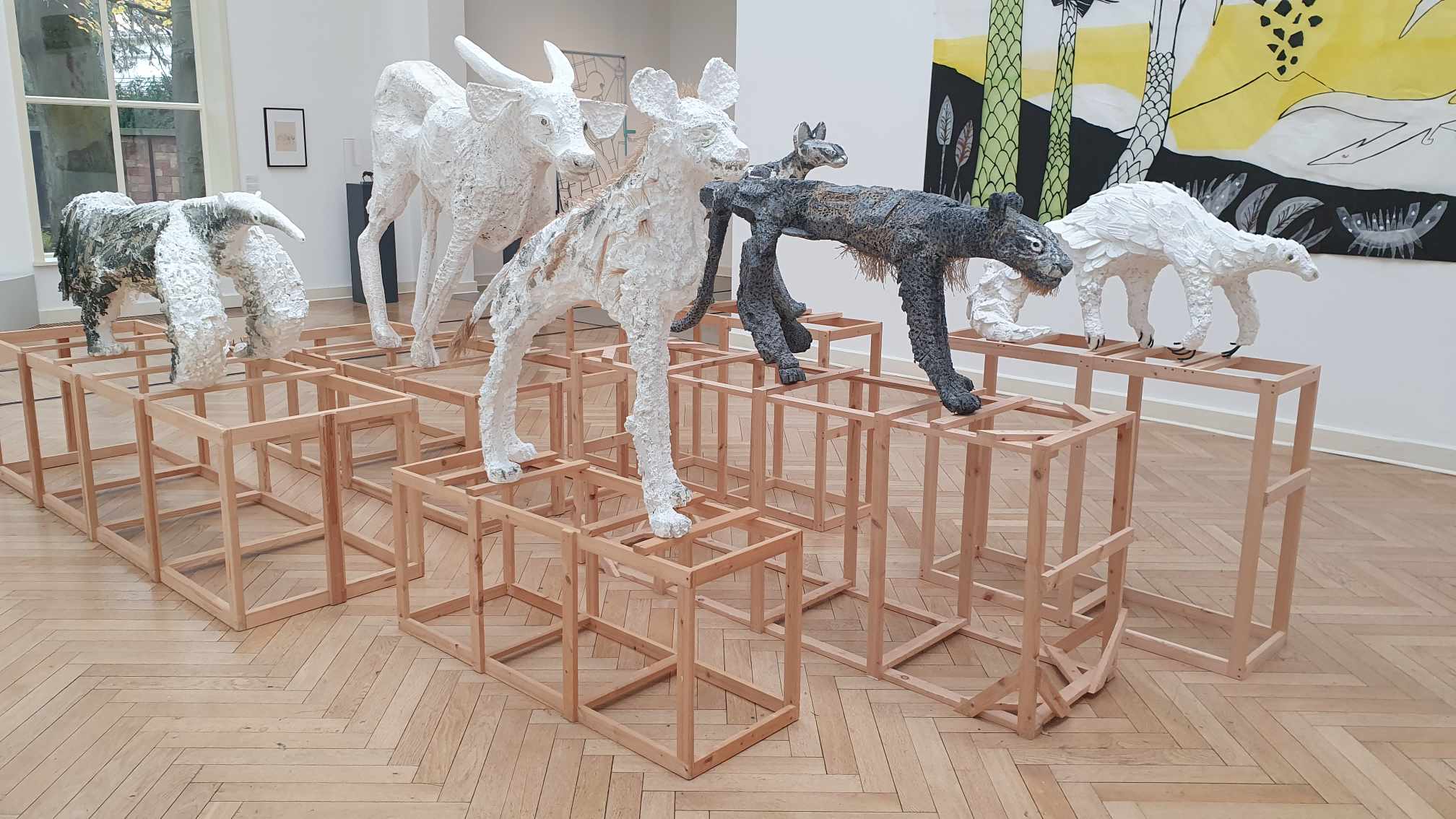 |
| Lin May Saeed in Georg Kolbe Museum |
The first villa is the Georg Kolbe Museum, a 1928 modernist villa in Westend. I visited it on a Thursday afternoon in November when the sun hesitantly appeared in the sky above Berlin. The S-Bahn was on strike, and many other things were (and are) going off rail in Germany, but once I arrived in the villa, everything was just fine. Also Sonja and Christof, who I met in the museum, said so. We called it a bubble and we were happy to be in it.
Sonja and Christof told me that they once visited the studio of the artist whose work is now on show in the Georg Kolbe Museum. Lin May Saeed (1973-2023) had bunnies in her studio. As far I remember, there were no bunnies in the exhibition, but Sonja and Christof said there were some real ones in the garden outside and that there was an exhibition label inside that pointed them out. I never came upon this label and I am not sure if I misunderstood my conversation partners, but wouldn't it be a wonderful idea?
The Snow Falls Slowly in Paradise is such a beautiful title for an exhibition that it makes you want to cry in a good, self-soothing way. Saeed made animals out of styrofoam, this ugly material of modern times that Katharina Grosse uses to create expanded painting. Saeed doesn't expand, I don't think expansion was ever in her vocabulary. The artist carved animals out of the artificial styrofoam and created a world in which you forget what it was made of.
 |
| Bruno Pélassy and the Order of the Starfish at Haus am Waldsee |
The second villa is from 1922 and located in the south of Berlin, also known as the lake district: Haus am Waldsee. Since 2022 it has a new director, Anna Gritz, and it was the first time I made it there to see her exhibition Bruno Pélassy and the Order of the Starfish. I had heard good things about it, and it was also very good. The work of Bruno Pélassy's (1966-2002) is combined with that of others, most prominently Soshiro Matsubara, who draped the walls with textiles in which the art could thrive.
The effect was highly sensual. Think of furry creatures, relics made of beads, coloured glass, aquariums, shrines, jewellery, and the bourgeois villa at the lake, with the swans gracefully posing along the shoreline and the fox crossing the meadow without hastening its pace, delivered the perfect décor, effortlessly. No doubt, this exhibition is about disease, the failing body, viruses, but it seems that in the mids of despair there is a generous abundance to give in before one lets go of life.
Afterwards, in the garden house of the villa, my friend Charlotte and I visited the book presentation on Margaret Raspé (1933-2023), an artist who lived in the vicinity of the villa and had been shown there earlier this year. Anna Gritz, together with Clara Bausch, artist and long-time assistant to Margaret Raspé, the artist Karolin Meunier, who wrote for the catalogue, and the co-editor Eva Wilson read from the catalogue and told some anecdotes as a way of commemorating Raspé, who passed away only recently.
I would have liked to visit that kitchen of Raspé where she welcomed everyone, from Fluxus artists, Actionists, to whoever needed a cup of coffee. It was in the kitchen that she put on her camera helmet in order to film herself while doing the dishes or preparing the chicken before putting it in the grill. The kitchen must also have been the place where she wrote down her daily routines in the house, which were monotonous but sound like poetry: Treppe rauf. Treppe runter. Tür auf. Tür zu.
I would also like to be friends with these four women who worked on/contributed to Raspé's book. "They were so friendly!" Charlotte exclaimed upon leaving the event. It had also crossed my mind while listening to the readings and the conversation. The friendliness of the evening did not only concern the absent artist, but also one another, with no one imposing or taking up too much space. It also reached those sitting in the far back of the room where, dulled by the winter, politics and the art world, it caught us by surprise.